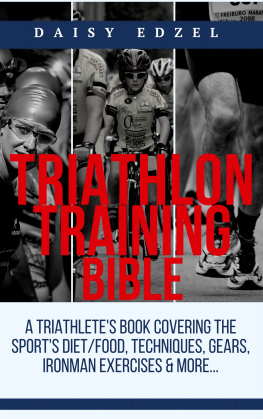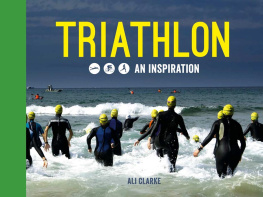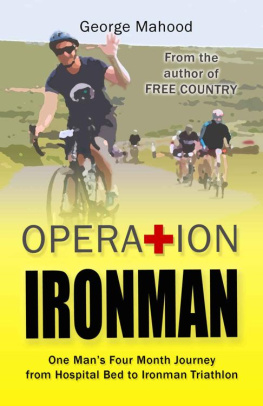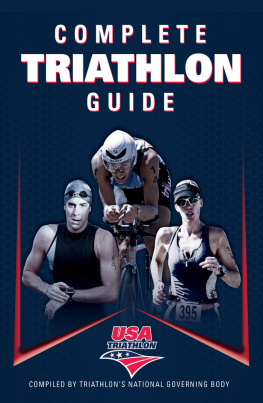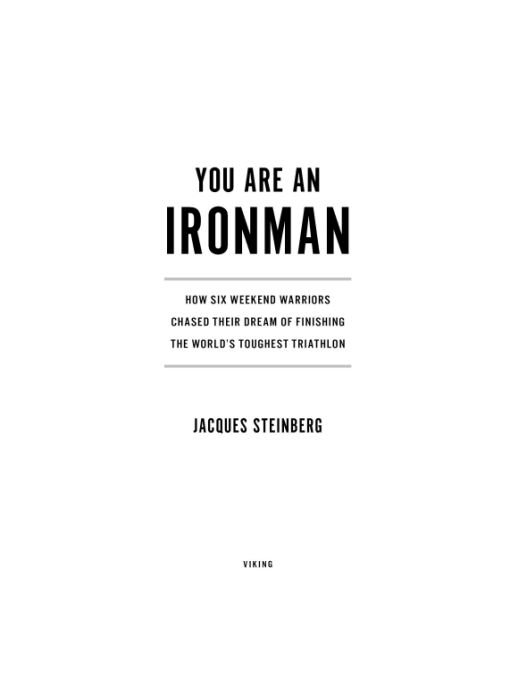Table of Contents
ALSO BY JACQUES STEINBERG
The Gatekeepers
For Ali, Jordan, and Sharon
who make me feel like an IronDad, every day
and
For Paul Epstein, Gary Rodbell, and Will McCurdy
who put the will (and can) in Team Will
Introduction
Nell Martin loped between the glass towers of downtown Tempe and at last broke through the wide band of tape that had been stretched taut in front of her, snapping it as if she were popping the cork from a bottle of champagne. The watch on her left wrist read 10:34 P.M.more than three hours after the sun had set over this gateway to the Arizona desert. High above her head the numbers 15:34:36 were illuminated in neon yellow, as bright as a Times Square billboard, signifying the 15 hours, 34 minutes, and 36 seconds she had taken to complete her days journey. Her skin was caked white with salt, the result of a continuous sweat that had long ago dried in the cool night air. Willing herself to a stop a few steps past the finish line, Nell allowed a volunteer whose hands were sheathed in latex gloves to wrap her in a foil blanket. He then escorted her toward a table piled high with pizza, of all things. There she could begin restoring her body to normalincluding tending to the leg muscles that would soon begin to throb uncontrollablya process that would ultimately take more than a week.
An anesthesiologist and married mother of three teenagers, Nell was in better shape than many of those recovering around her. Nearby, as if at a makeshift Red Cross disaster tent, several dozen men and women laid out on cots were receiving sugar water and other intravenous fluids through needles tethered to clear plastic bags. Occasionally a wheeled stretcher would be summoned to take someone by ambulance to a nearby emergency room for more intensive attention. But Nell needed no such intervention. For five years she had trained diligently for this day, as a way to mark her fiftieth birthday, which she had celebrated only a few days before. As her heart rate slowed, her mind kept returning to the ten words the announcer had said to the crowd assembled in makeshift bleachers on either side of the finish line.
Nell Martin of Grand Junction, Colorado, he had boomed, you are an Ironman.
On that Sunday before Thanksgiving 2008, as much of the nation contemplated gorging itself on turkey and stuffing with family and friends, Nell and more than two thousand others swam, cycled, and ran longer and farther in one day than many of us will do in a lifetime. Ranging in age from eighteen to seventy-six, they were competitors in the Ford Ironman Arizona, one of twenty-three officially sanctioned, 140.6-mile Ironman triathlons staged around the world that year. Eight were in the United States, including the Ford Airman World Championship in Kona, Hawaii, the original and best known of such races. In an Ironman, the already formidable elements of a typical triathlon (known as an Olympic-distance)0.9-mile swim, 26-mile bike ride, 6-mile run, all of which was sufficient to kill at least eight participants in 2008 aloneare supersized.
An Ironman triathlon consists of a 2.4-mile open-water swim (the equivalent of about 175 lengths across a community lap pool), followed by a 112-mile bike ride (imagine pedaling from New York City past Philadelphia), and then, as if some kind of cruel joke, a 26.2-mile marathon run. No physical exam is typically required, nor is any previous experienceother than for Ironman Hawaii, which is open mainly to top finishers in various age groups in prior qualifying races. Those who choose to put their bodies and minds through such a gantlet, nearly all weekend warriors with jobs and families, must complete the entire event in no more than seventeen hourswhich includes any time spent recovering from the swim or changing from biking gear into running shoes. Nell Martin, for example, had emerged from Tempe Town Lake shivering so profoundly that it took sixteen minutes before she could mount her bike.
With the swim beginning at 7:00 A.M. sharp, the deadline that looms is the stroke of midnight. Even someone crossing the finish line ninety seconds late, as one woman did at Ironman Arizona 2008, is branded with the scarlet letters every Ironman triathlete dreads: DNF, or did not finish. Mike Reilly, the announcer whose hoarse voice has welcomed nearly 200,000 successful Ironman competitors across the finish line in more than a hundred such races since 1989, has a special message for those who have come up painfully short.
You are an Ironman, he tells them over the public address system, in our hearts.
At the previous Ironman Arizona, staged on an April day when temperatures soared well over ninety degrees, nearly 15 percent of the participantsabout 300had quit well before they were within range of Reillys voice. Even now, with Ironman Arizona having been moved to the cooler confines of November (the high temperature, just after midday, was eighty), 121 people had withdrawn mid-race.
Nell Martin, who had run a marathon at forty-three but had otherwise not considered herself much of an athlete for the first four decades of her life, had become a first-time Ironman with nearly ninety minutes to spare (and, no, the powers that be who preside over the Ironman culture, some of them women, have yet to accede to a gender-neutral designation). Like the more than fifty thousand others who completed an Ironman-distance triathlon somewhere in the world in 2008and the hundreds of thousands of others who participated in triathlons of lesser intervals that yearNells early-morning swims and runs and midday bike rides had paid off. Little surprise, then, that in her hotel room afterward she found she could not sleepnot because of the various aches she was feeling, and not even because of the adrenaline that still coursed through her veins, but because she was so filled with the sense of pride and satisfaction.
At five oclock the next morning, she left her room, climbed into her rental car, and headed back toward the park adjacent to the finish area to celebrate her accomplishment in the only way that seemed appropriate. Taking her place in a line that was already about one hundred people long before sunriseand would snake to nearly five hundred as the sun came upNell waited patiently for nearly two hours. Just after 7:00 A.M., barely twenty-four hours after she had descended into the sixty-two-degree waters of Town Lake to begin her odysseyand less than nine hours after she completed itshe strode up to a volunteer seated in front of a laptop.
Yes, Nell Martin said as she handed over her credit card, she was there to sign up for next years race.
After the race organizers had accommodated those who had shown up in person to registerincluding other 2008 participants and race volunteers, as well as some who had flown cross-country just to ensure they got a placethe registration process was opened to a national audience online. The computer system promptly crashed. Long before sundown, Ironman Arizona 2009, which was a year away, had sold outand at no small cost to the participants. Though the stock market was still in the midst of its historic plunge that fall, each of the would-be competitors in Ironman Arizona had paid $525 apiece to enter. Some had withdrawn the money from the saving accounts of their college-bound children to reserve a slot, while others had deferred expenses like house repairs. The fee, they knew, was nonrefundable.


